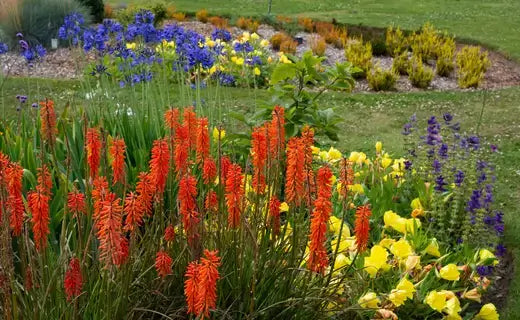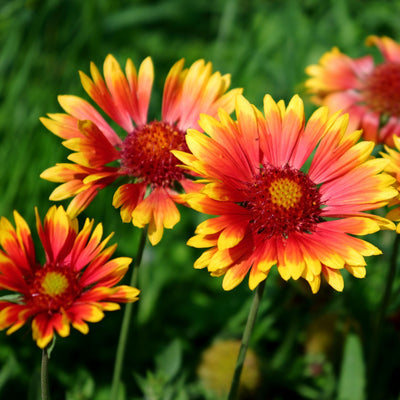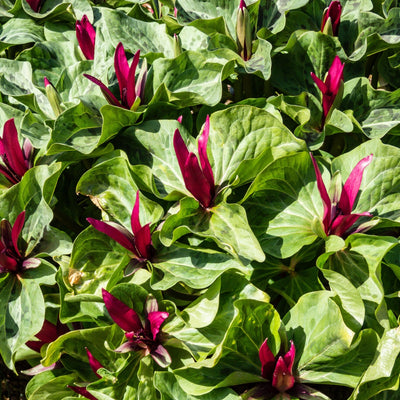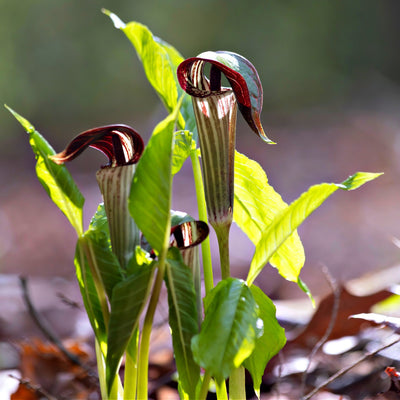Exploring Vibrant Autumn Companions
As summer fades into the crisp embrace of autumn, the landscape undergoes a captivating transformation, donning a tapestry of warm and earthy hues. To enhance the allure of this seasonal shift, many garden enthusiasts turn to perennials that gracefully complement fall foliage. Among the many options, several stand out for their ability to add depth and contrast to the autumn garden canvas. Blanket Flowers, Red Trillium, Jack in the Pulpit, Butterfly Weed, and Wood Poppies are remarkable perennials that infuse gardens with their unique beauty and charm during the fall season.
Blanket Flowers (Gaillardia)
Blanket Flowers, scientifically known as Gaillardia, are vibrant and captivating perennials that bloom throughout the warmer months and carry their charm into the fall season. Their distinct daisy-like blooms in red, yellow, and orange shades create a stunning contrast against the changing foliage. Blanket flowers are aptly named as they spread a cozy "blanket" of color across the garden. Their ability to withstand cooler temperatures and continue flowering well into fall makes them a perfect companion for the changing landscape. Blanket Flowers also attract pollinators like bees and butterflies, contributing to the ecological balance of the garden.
Red Trillium (Trillium erectum)
Red Trillium, a native woodland perennial, is renowned for its elegance and unique appearance. The trillium family includes several species, but the Trillium erectum, also known as Wake Robin, is particularly captivating in the fall garden. Red Trillium enchants the landscape with its deep maroon, three-petaled flowers above a whorl of three leaves. Its deep coloration stands out brilliantly against the muted hues of autumn foliage. Found in shaded woodland areas, Red Trillium thrives in the cool temperatures of fall and becomes a focal point of interest for those who appreciate its delicate yet striking presence.
Jack in the Pulpit (Arisaema triphyllum)
Jack in the Pulpit, scientifically known as Arisaema triphyllum, is a fascinating and unusual perennial that captures attention with its distinctive structure. Native to North American woodlands, this plant's inflorescence resembles a "pulpit" where a tiny "Jack" (the flower) stands enclosed by a hood-like structure known as a spathe. The covering can range from green to deep maroon, complementing the evolving fall foliage. This perennial's unique form and texture make it an intriguing addition to any autumn garden, as it lends an air of mystery and curiosity to the landscape.
Butterfly Weed (Asclepias tuberosa)
Butterfly Weed, scientifically known as Asclepias tuberosa, is a beacon for pollinators and a charismatic companion for fall foliage. This perennial's vibrant orange, red, or yellow flower clusters stand out strikingly against the backdrop of autumn leaves. As a native wildflower, Butterfly Weed is cherished for its role in supporting monarch butterflies and other pollinators. The plant's nectar-rich blooms attract these insects during their fall migration, making it an essential ecological contributor to the garden. Its fiery blooms contribute a burst of color that complements the warm tones of fall foliage.
Wood Poppies (Stylophorum diphyllum)
Wood Poppies, also known as Celandine Poppies, bring a touch of whimsy and elegance to the fall garden with their delicate blooms. These woodland perennials feature bright yellow flowers reminiscent of buttercups, which form a delightful contrast against the rich hues of autumn leaves. The dainty, cup-shaped flowers are held on slender stems above lobed foliage. Wood Poppies thrive in shaded areas, making them an ideal choice for underplanting more giant trees that offer dappled sunlight. Their ability to thrive in cooler temperatures and cheerful blossoms makes them a charming addition to the fall landscape.
Red Hot Pokers (Kniphofia)
With the Red Hot Poker's vibrant torch-like blooms, create a stunning contrast against the backdrop of fall foliage. Their bold, fiery shades of red, orange, and yellow infuse the garden with bursts of color that harmonize beautifully with the warm hues of autumn leaves. These striking perennials add visual interest and evoke a sense of warmth and energy, making them a captivating addition to the fall landscape.
The world of perennials complementing fall foliage is a realm of breathtaking beauty and captivating contrasts. Blanket Flowers, Red Trillium, Jack in the Pulpit, Butterfly Weed, and Wood Poppies are a few examples of the myriad options available to garden enthusiasts seeking to enhance their autumn landscapes. Whether it's the fiery hues of Blanket Flowers or the enigmatic allure of Jack in the Pulpit, these perennials offer a symphony of colors, shapes, and textures that harmonize with the changing leaves. By selecting these complementary perennials, gardeners can create an enchanting tapestry that celebrates the splendor of autumn and captures the essence of this transformative season.




